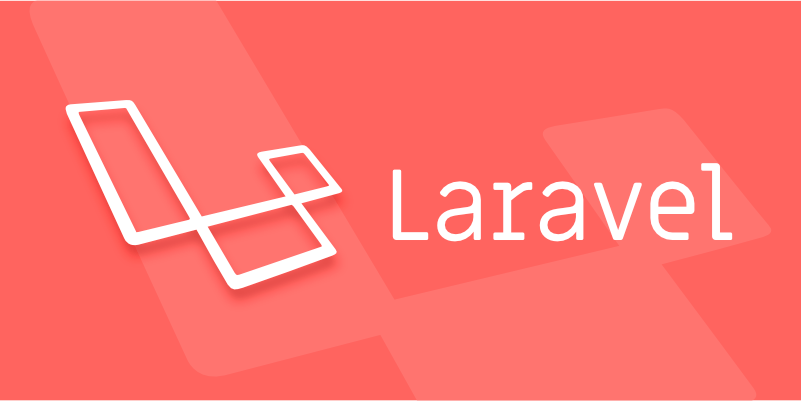Difference between Gates and Policies in Laravel Authorization.
Jul 16, 2025 am 01:24 AMIn Laravel, gates are used for model-independent global permission checks, while policies are used for model-independent structured authorization logic. 1. Gates is a closure check, suitable for judgments such as "whether the user can access the dashboard"; 2. Policies are bound to the model and centrally manage the authorization logic, such as defining whether the user can update a certain article; 3. Gates is simple and lightweight, suitable for one-time inspection, and Policies is easier to test and expand; 4. Laravel will automatically match the policy method according to the model, without manual association. Both can be used in the same application.

In Laravel, gates and policies are both tools for handling authorization logic, but they serve different purposes and are used in different contexts. Gates are simple, closure-based checks that work well for one-off authorization rules or actions not tied to a specific model. Policies, on the other hand, are more structured and organized — they're like controllers for authorization, grouping logic around a particular model or resource.

When to Use Gates
Gates are best when you need to check permissions that don't necessarily involve a specific model. For example, checking if a user can access an admin dashboard doesn't require looking at any particular data model — it's more about the user's general role or permissions.
- You define them using closings in the
AuthServiceProvider. - They're great for global checks, like "can this user view reports" or "is the user allowed to log in via API".
- Example:
Gate::define('view-reports', function ($user) { return $user->isAdmin(); });
You can then check this gate anywhere using:

if (Gate::allows('view-reports')) { ... }When to Use Policies
Policies are meant for model-based authorization. If your app has a Post model and you want to define who can update or delete a post, a policy is the right tool.
- Each policy is tied to a specific model.
- They offer methods like
update,delete,view, etc., which automatically receive the model instance. - Example policy method:
public function update(User $user, Post $post) { return $user->id === $post->user_id; }
To use it:

if ($user->can('update', $post)) { ... }This keeps your code clean and organized — all post-related authorization lives in the PostPolicy class.
Key Differences to Keep in Mind
Here are some practical differences between the two:
- Model dependency : Policies always involve a model; gates usually don't.
- Organization : Policies help keep things tidy when dealing with multiple related actions. Gates are quick and easy for small checks.
- Testing & reuse : Policies are easier to test and scale as your app grows.
- Naming conventions : Gates are named like abilities (
'edit-settings'), while policy methods match action names ('update','delete').
One thing people often miss is that Laravel automatically resolves policy methods based on the model type. So if you call $user->can('update', $post) , Laravel knows to look for the update method in the policy associated with the Post model — no need to manually wire that up beyond registering the policy.
How to Decide Between Them
If you're trying to decide which to use, here's a quick rule of thumb:
-
? Use a gate when:
- The check isn't tied to a model.
- It's a simple yes/no permission.
- You just need to do a quick check without creating extra files.
-
? Use a policy when:
- You're working with a model and common CRUD-style actions.
- You want cleaner, more maintained code.
- Your authorization logic might grow over time.
You can even mix both in the same app — gates for quick checks and policies for model-based decisions.
So yeah, gates and policies aren't interchangeable — they each have their place. Just remember: gates are for general abilities, and policies are for model-specific rules. Once you get the hang of that, Laravel's authorization system becomes much easier to work with.
The above is the detailed content of Difference between Gates and Policies in Laravel Authorization.. For more information, please follow other related articles on the PHP Chinese website!

Hot AI Tools

Undress AI Tool
Undress images for free

Undresser.AI Undress
AI-powered app for creating realistic nude photos

AI Clothes Remover
Online AI tool for removing clothes from photos.

Clothoff.io
AI clothes remover

Video Face Swap
Swap faces in any video effortlessly with our completely free AI face swap tool!

Hot Article

Hot Tools

Notepad++7.3.1
Easy-to-use and free code editor

SublimeText3 Chinese version
Chinese version, very easy to use

Zend Studio 13.0.1
Powerful PHP integrated development environment

Dreamweaver CS6
Visual web development tools

SublimeText3 Mac version
God-level code editing software (SublimeText3)

Hot Topics
 Creating Custom Validation Rules in a Laravel Project
Jul 04, 2025 am 01:03 AM
Creating Custom Validation Rules in a Laravel Project
Jul 04, 2025 am 01:03 AM
There are three ways to add custom validation rules in Laravel: using closures, Rule classes, and form requests. 1. Use closures to be suitable for lightweight verification, such as preventing the user name "admin"; 2. Create Rule classes (such as ValidUsernameRule) to make complex logic clearer and maintainable; 3. Integrate multiple rules in form requests and centrally manage verification logic. At the same time, you can set prompts through custom messages methods or incoming error message arrays to improve flexibility and maintainability.
 Working with pivot tables in Laravel Many-to-Many relationships
Jul 07, 2025 am 01:06 AM
Working with pivot tables in Laravel Many-to-Many relationships
Jul 07, 2025 am 01:06 AM
ToworkeffectivelywithpivottablesinLaravel,firstaccesspivotdatausingwithPivot()orwithTimestamps(),thenupdateentrieswithupdateExistingPivot(),managerelationshipsviadetach()andsync(),andusecustompivotmodelswhenneeded.1.UsewithPivot()toincludespecificcol
 Sending different types of notifications with Laravel
Jul 06, 2025 am 12:52 AM
Sending different types of notifications with Laravel
Jul 06, 2025 am 12:52 AM
Laravelprovidesacleanandflexiblewaytosendnotificationsviamultiplechannelslikeemail,SMS,in-appalerts,andpushnotifications.Youdefinenotificationchannelsinthevia()methodofanotificationclass,andimplementspecificmethodsliketoMail(),toDatabase(),ortoVonage
 Understanding Dependency Injection in Laravel?
Jul 05, 2025 am 02:01 AM
Understanding Dependency Injection in Laravel?
Jul 05, 2025 am 02:01 AM
Dependency injection automatically handles class dependencies through service containers in Laravel without manual new objects. Its core is constructor injection and method injection, such as automatically passing in the Request instance in the controller. Laravel parses dependencies through type prompts and recursively creates the required objects. The binding interface and implementation can be used by the service provider to use the bind method, or singleton to bind a singleton. When using it, you need to ensure type prompts, avoid constructor complications, use context bindings with caution, and understand automatic parsing rules. Mastering these can improve code flexibility and maintenance.
 Strategies for optimizing Laravel application performance
Jul 09, 2025 am 03:00 AM
Strategies for optimizing Laravel application performance
Jul 09, 2025 am 03:00 AM
Laravel performance optimization can improve application efficiency through four core directions. 1. Use the cache mechanism to reduce duplicate queries, store infrequently changing data through Cache::remember() and other methods to reduce database access frequency; 2. Optimize database from the model to query statements, avoid N 1 queries, specifying field queries, adding indexes, paging processing and reading and writing separation, and reduce bottlenecks; 3. Use time-consuming operations such as email sending and file exporting to queue asynchronous processing, use Supervisor to manage workers and set up retry mechanisms; 4. Use middleware and service providers reasonably to avoid complex logic and unnecessary initialization code, and delay loading of services to improve startup efficiency.
 Managing database state for testing in Laravel
Jul 13, 2025 am 03:08 AM
Managing database state for testing in Laravel
Jul 13, 2025 am 03:08 AM
Methods to manage database state in Laravel tests include using RefreshDatabase, selective seeding of data, careful use of transactions, and manual cleaning if necessary. 1. Use RefreshDatabasetrait to automatically migrate the database structure to ensure that each test is based on a clean database; 2. Use specific seeds to fill the necessary data and generate dynamic data in combination with the model factory; 3. Use DatabaseTransactionstrait to roll back the test changes, but pay attention to its limitations; 4. Manually truncate the table or reseed the database when it cannot be automatically cleaned. These methods are flexibly selected according to the type of test and environment to ensure the reliability and efficiency of the test.
 Choosing between Laravel Sanctum and Passport for API authentication
Jul 14, 2025 am 02:35 AM
Choosing between Laravel Sanctum and Passport for API authentication
Jul 14, 2025 am 02:35 AM
LaravelSanctum is suitable for simple, lightweight API certifications such as SPA or mobile applications, while Passport is suitable for scenarios where full OAuth2 functionality is required. 1. Sanctum provides token-based authentication, suitable for first-party clients; 2. Passport supports complex processes such as authorization codes and client credentials, suitable for third-party developers to access; 3. Sanctum installation and configuration are simpler and maintenance costs are low; 4. Passport functions are comprehensive but configuration is complex, suitable for platforms that require fine permission control. When selecting, you should determine whether the OAuth2 feature is required based on the project requirements.
 Implementing Database Transactions in Laravel?
Jul 08, 2025 am 01:02 AM
Implementing Database Transactions in Laravel?
Jul 08, 2025 am 01:02 AM
Laravel simplifies database transaction processing with built-in support. 1. Use the DB::transaction() method to automatically commit or rollback operations to ensure data integrity; 2. Support nested transactions and implement them through savepoints, but it is usually recommended to use a single transaction wrapper to avoid complexity; 3. Provide manual control methods such as beginTransaction(), commit() and rollBack(), suitable for scenarios that require more flexible processing; 4. Best practices include keeping transactions short, only using them when necessary, testing failures, and recording rollback information. Rationally choosing transaction management methods can help improve application reliability and performance.






